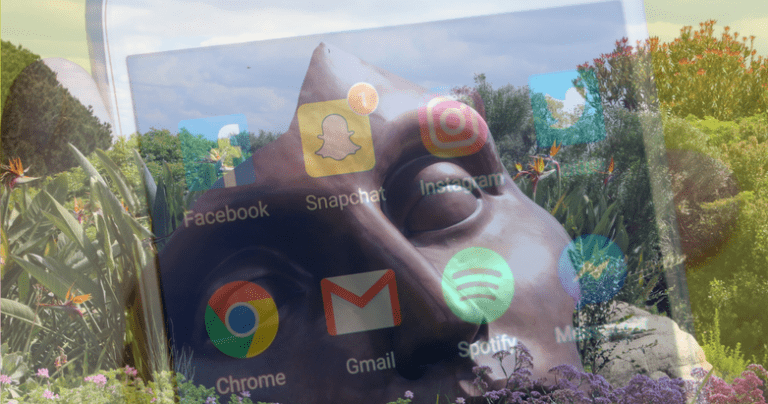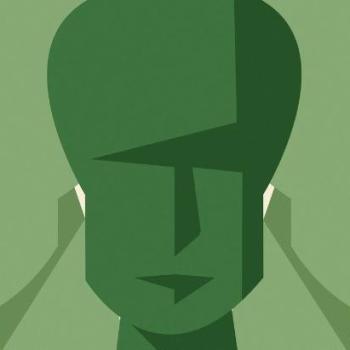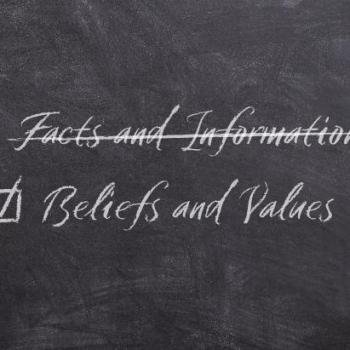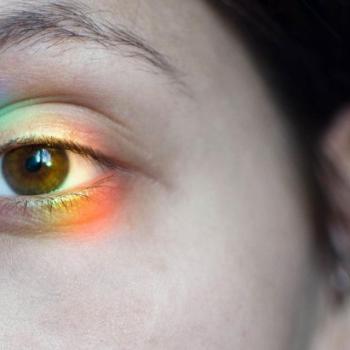
I am old enough to remember when the Internet was new.
The spiritual community had high hopes.
“The Internet is going to be like a big city, where diversity will become the new normal and usher in an age of understanding and compassion,” my friends said.
“Yes, it will be like the coastal town where Gandhi grew up, where the temple priests read equally from the Bible, Quran, and the Bhagavad Gita,” I responded.
But that’s not how it has turned out, is it?
In fact, some suggest that hate has won the Internet. Extremist groups, many of which had almost become extinct before the advent of the Internet, now thrive, anyone who expresses his or her opinion online is likely to get trolled by haters, and many react viscerally to other people’s ideas, to the point of dehumanizing each other.
While I don’t think that hate has won (yet), the trend seems to be going in the wrong direction.
In this column, I want to examine two ideas that partially explain why the Internet has become so divisive.
The Ideological and Human Personas
Padraig O’Malley, who was a facilitator during the Northern Ireland peace process, came up with the idea of the two personas. According to him, each human being is a blend of the ideological persona and the human persona.
As the names suggest, the ideological persona refers to beliefs that people adhere to, from political, theological, nutritional, and spiritual ideologies and beyond, and the human persona refers to aspects that are co-human, from basic needs all the way up the Maslow hierarchy.
O’Malley explains that the only way to dehumanize another person is to paint him or her as an ideologue only and refuse to see co-human elements.
(You can read more about this idea in a previous column or attend one of my upcoming lectures on the topic.)
On the Internet, this is especially easy to do. Most of what we see there are each other’s ideologies.
In those surroundings, we are attracted by people who mirror our chosen worldviews while we are repelled by those who oppose them.
The problem is that human beings are not one-dimensional.
Over the years, I have met many quality people who’ve expressed ideas I disagree with and, conversely, met quite a few unpleasant people who shared my ideology.
On the Internet, however, we only see part of the complexity and judge people on ideologies alone, which is unfair, to say the least.
This reduction of people to mere ideologues is one of the main avenues towards dehumanization. The Internet has, in many cases, become a tribal environment where people we disagree with immediately become the other and are judged as less than human as a result.
Road Rage and Internet Rage
Another idea explains online anger, especially when we consider that people appear to be quicker to get enraged by what they see on the Internet than by what they register during direct human contact.
Why is that?
In a 2001 four-part BBC documentary about the human face, John Cleese made some very interesting observations about road rage that are relevant to this topic.
He explained that when human beings bump into each other while walking down the street, there is a micro facial exchange that happens and it quickly diffuses reactions of irritation because it equals saying sorry.
Road rage, on the other hand, is fairly common and not so easily resolved. Cleese, along with the research team behind the show, suggests that people are quicker to get enraged on the road because there is no facial exchange that happens similar to the one that occurs when people are walking down the street.
Ergo, without the micro facial expressions there is no way to say sorry, which means there is no immediate way to diffuse the initial anger.
The Internet is much the same. There is no human interaction, no facial expression to diffuse the situation, no tone of voice to interpret, no body language to react to, only words, shared memes, cartoons, and articles.
Internet rage is similar to road rage because it is triggered by lack of human interaction.
Unfortunately, this fury, which has mostly been reserved for loners sitting in front of the computer, has started to spill over into the public arena more and more due to repetition and conditioning, making rage the default setting for some people.
Very Little Nuance
To top this off, people aren’t reacting to other people’s real thoughts and feelings most of the time, but rather to short bursts of thought or evocative shared material that wasn’t even created by the person they are reacting to.
Most thinking is more nuanced than what is actually shared on social media. You would, for example, get more nuance about my views from a personal conversation than from reading one of my columns.
Respectful conversations bring nuance to light.
More Human Contact
If I were to summarize this column, I would say that on the Internet we are in each other’s minds but not in each other’s lives.
That brings me to possible solutions.
In addition to remembering that there is a human being on the other side of each Internet interaction, I think the best remedy against dehumanization and rage is more human contact.
Being face to face with people.
And not only with friends.
We need to be around people we agree and disagree with if we want to buck this trend.
If we don’t make any changes to this Internet culture, then the inclination towards dehumanization and rage will likely continue and spill over into our streets at an ever-increased rate.
There is a lot to disagree about and we must have those discussions, but allowing rage and dehumanization to fester is dangerous. We must train ourselves to disagree in a civil manner, even on the Internet.
Gudjon Bergmann
Author & Interfaith Minister
If you live in Central Texas, consider coming to one of my upcoming programs titled Working Together Towards Harmony. You can find the program schedule here.
Pictures: Pexels.com CC0 License












